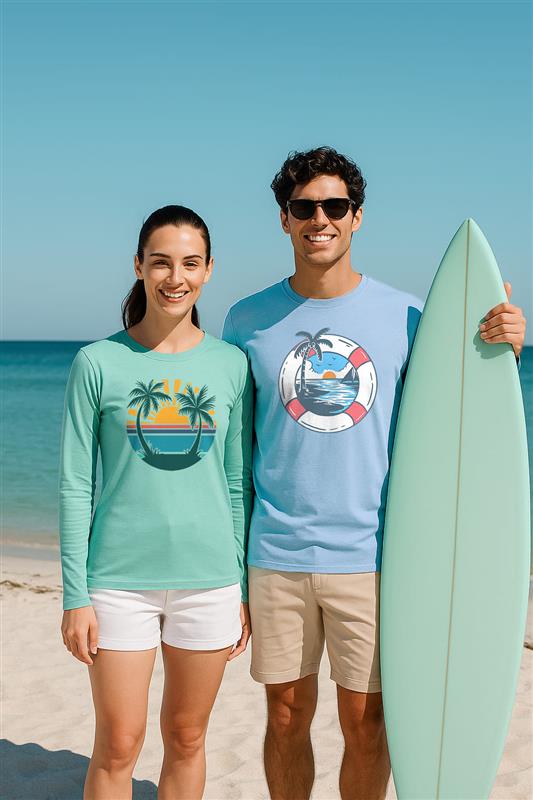Hiking Essentials To Keep You Safe On Your Outdoor Adventures

Having the right hiking equipment makes hiking safer and more enjoyable. In order to remain prepared, safe, and comfortable while hiking, proper hiking equipment is essential. Smart packing keeps you safe. It also helps you relax and enjoy the trail. You won’t be thinking about the things you forgot. For new hikers, packing can feel confusing. But with a little planning, it gets easier.
This blog post makes clear the top gear, ranging from navigation equipment to safety, hydration, and rain gear. There are tips in here for packing smart, being prepared, and ensuring that each hike is safer and more enjoyable.
Key Takeaways
-
Choose reliable gear for safety and comfort.
-
Pack for weather and trail conditions.
-
Organize essentials for easy access and less stress.
Core Hiking Gear Essentials
Hiking is more enjoyable and safer with the proper equipment. Hikers require shoes, a backpack, and layers to be comfortable, ready, and safe on the trail.
Proper Footwear
The proper footwear avoids blisters and injuries on the trail. Good ankle support is provided by strong hiking boots that assist on uneven terrain. Trail shoes are lighter and provide enhanced breathability for short, well-maintained trail.
Fit is important. Shoes that pinch your toes or slip at the heel can ruin a hike. When you get new boots, try them out on short walks before hiking longer distances. You should also wear wool or synthetic socks to keep your feet dry and prevent blisters.
Look for these features in hiking shoes:
-
Waterproof material for wet trails
-
Grippy soles for better traction
-
Cushioned insoles for comfort
Backpack Selection
A decent backpack is a must-have piece of hiking equipment which holds weight and keeps things tidy. Daypacks (10-30 liters) work well for day hikes, holding water, food, and an extra jacket. The bigger packs will hold extra food, clothing, and emergency rations on longer hikes.
Backpacks with shoulder straps that are padded, hip belts, and back support feel better on the trail. A pack that fits well avoids sore shoulders, and a weight that is evenly balanced aids in stability. Side pockets, hydration sleeves, and adjustable straps make it simple to pack.
Prior to each hike, the hikers ought to carry only essential items and check the pack for comfort and fit.
Clothing Layers
Layered clothing helps hikers stay warm, dry, and comfortable as the weather changes. Keeping skin dry (made of wool or synthetic fabric) is the job of the base layer. Mid-layers like fleece or light jackets provide warmth.
The outer layer shields from rain or wind. Waterproof jackets, such those made of Gore-Tex or comparable materials, let moisture out while keeping it out.
A typical layering system includes:
-
Moisture-wicking Hiking shirt
-
Insulating mid-layer (fleece or sweater)
-
Waterproof and windproof outer shell
Navigation And Safety Equipment
When hiking, getting lost or facing an emergency can happen quickly. The right navigation and safety essential hiking gear help keep hikers on track and give them peace of mind.
Maps And Compass
Paper maps and a magnetic compass work without batteries. These resources remain effective even when electronic gadgets break down or lose power. Topographic maps should be known by hikers to locate trails, sources of water, and campsites.
A good map covers the route and nearby areas. Maps should be up-to-date and stored in a waterproof case. A sturdy compass should be easy to use and have clear markings.
In poor visibility or off-trail hiking, learning basic compass skills can be helpful. Most outdoor stores offer beginner lessons or guides. Carrying both a map and a compass is standard practice for safe hiking.
GPS Devices
A handheld GPS-enabled smartphone helps to track location. GPS units utilize satellites to provide precise positions, altitudes, and directions. Many models allow hikers to save favorite places or planned routes.
A GPS device works best with extra batteries or a power bank. Waterproof cases protect devices from rain and drops. Hikers should not rely solely on electronic gear, as signal loss or damage can occur.
Personal Locator Beacons
A Personal Locator Beacon (PLB) is a small, emergency-only device that sends a distress signal to rescuers along with GPS coordinates. They work in places without phone service.
Activation is typically straightforward: press a button after opening the protective cover. Most PLBs have a battery life of 24 hours or more. Registration with local agencies enables responders to identify the hiker more quickly and plan rescue efforts more effectively.
PLBs do not replace safe hiking habits or knowledge of the area. They are best used in serious emergencies, such as injuries or being lost when help is far away. Carrying a PLB adds an extra layer of safety for remote adventures.
Hydration And Nutrition
Staying hydrated and eating well are crucial for safety and energy while hiking. Having the right containers, clean water, and proper food helps prevent problems like dehydration and fatigue.
Water Bottles And Reservoirs
Hikers need a reliable way to carry water. Water bottles can be filled and washed easily. Common materials include plastic, aluminum, and stainless steel. Stainless steel bottles keep the water cool and more durable, yet heavier.
Hydration bladders, or bladders, store in most backpacks. They carry more water than solo bottles and have a drinking tube for hands-free sipping. Most reservoirs can carry between 1.5 to 3 liters of water.
The table below shows some differences:
|
Container |
Pros |
Cons |
|
Water Bottle |
Easy to use, durable |
Often smaller volume |
|
Reservoir |
High capacity, hands-free |
Can be hard to clean |
Water Filtration Systems
Despite their apparent cleanliness, natural water sources may include pollutants and microorganisms. Using a water filter or purifier is the best approach to ensure that water is safe to drink. Popular options include purifier pills, pump filters, and portable straw filters.
Straw filters let you drink directly from streams. Pump filters clean larger amounts and are good for groups. Tablets can be handy and lightweight, but they may not taste good.
Filtration methods to consider:
-
Straw filters: quick use, good for one person
-
Pump filters: more water, better for small groups
-
Chemical tablets: easy to pack, long shelf life
Always check the filter or tablet instructions. Not all filters remove viruses, so hikers should choose carefully, especially when hiking in areas with known risks.
Trail Food And Snacks
Carrying sufficient food is crucial for energy. Hikers need to choose foods with high calorie, protein, and healthy fats. Some great snack options include nuts, beef jerky, trail mix, granola bars, and dried fruit. It’s a good idea to bring food that’s light, easy to carry, and doesn’t spoil quickly. They must neither go bad nor melt in a hot pack. Reusable bags are used by most hikers to store snacks that are kept fresh and handy.
Quick snack ideas:
-
Mixed nuts and seeds
-
Protein or granola bars
-
Dried fruit or fruit leather
-
Crackers with nut butter
Weather Protection
The weather may shift rapidly on a hike. Proper equipment keeps hikers dry, protects them from the sun, and keeps them warm when it is cold.
Rain Gear
Waterproof jackets and pants prevent rain from soaking clothing and skin. Look for essential hiking gear made with breathable yet water-resistant materials, such as Gore-Tex or similar fabrics. These materials help prevent sweat from accumulating inside layers.
A decent rain jacket should have a hood, taped seams, and adjustable cuffs to keep water out. A lightweight pair of rain pants can be rolled up and stored in a backpack, and worn over hiking pants when it rains. Waterproof gaiters keep mud and water from entering boots, especially in wet or muddy conditions.
Backpack covers and dry bags prove useful in heavy rain. They keep gear and electronics from getting ruined by water.
Sun Protection
Too much sun exposure can cause heat exhaustion or stinging sunburns. Dress smartly is the best protection. Use long-sleeved, light clothing and sunglasses with UV ray-blocking abilities. They protect your skin and cover sensitive areas such as your face, neck, and ears.
Sunscreen is a necessity as well. Wear one with SPF 30 or greater. Put it on all your exposed skin, particularly if you will be sweating. Reapply every two hours to remain protected. Lip balm with sun protection guards lips from getting chapped or burned.
A bandana or neck gaiter can shield the back of the neck. Lightweight, light-colored clothes reflect the sun’s heat and are less likely to get too warm.
Insulation Layers
Hiking conditions can vary with altitude or weather. Layering keeps the body warm when it's cold. The lower layer, usually wool or synthetics, takes the sweat away from the skin. Cotton should not be used since it retains moisture and makes the body too cold.
A mid-layer, such as a fleece or a lightweight down jacket, insulates. Outer layers, such as windbreakers or insulated jackets, give additional protection if it gets cold.
They consist of gloves and a hat and are worn where one loses the most heat when it is either cold or where one is located at high elevations.
Emergency Readiness
Hikers often face unpredictable conditions and the risk of accidents. Bringing the right emergency items helps keep everyone safe and prepared to act quickly.
First Aid Kit
All hikes need to begin with a first aid kit. It doesn't need to be extravagant, but it must be comprehensive. Bring bandages, gauze, tape, antiseptic wipes, and antibiotic cream. These are useful for cuts, scrapes, or blisters along the trail.
Scissors can be used to cut tape or clothing. Tweezers will remove splinters or ticks. Include some pain medication as well—acetaminophen or ibuprofen work well. If there is someone in your group with allergies, take antihistamines or an epinephrine auto-injector along "just in case".
Place all in a water-resistant case or pouch to protect and keep items dry. Periodically check and replace expired items. A printed first-aid guide or instruction card is helpful in an emergency.
|
Container |
Pros |
Cons |
|
Water Bottle |
Easy to use, durable |
Often smaller volume |
|
Reservoir |
High capacity, hands-free |
Can be hard to clean |
Multi-Tools
Multi-tools come with handy items like pliers, scissors, screwdrivers, and small blades. They’re useful for all kinds of tasks such as opening cans, cutting food, or fixing gear on the trip. On the route, they can also assist with repairing damaged tent poles or backpack straps.
Select a multi-tool that is both strong and lightweight. Some models come with extras like a tiny saw, file, or can opener. Look for a tool with a locking blade for safety.
Keep the tools in a readily accessible pocket. Practice using each tool before you go on the hike. Regular use helps build confidence and speed when acting in an urgent situation. Clean and dry the tool after every trip to prevent rust.
Packing And Organization Tips
-
Packing smart keeps gear safe and easy to find. It also helps balance the weight, so the hike feels comfortable from start to finish.
-
Pack heavier items close to the back and near the middle. This puts less strain on the shoulders and helps with balance.
-
Use small stuff sacks or plastic bags to keep similar items together. For example, pack all snacks in one bag and first aid items in another.
-
Keep items needed most often within reach. Water bottles, snacks, and rain gear fit well in side pockets or the top of the backpack.
-
Use the backpack’s pockets wisely. Store small things like lip balm, tissues, or headlamps in outer pockets for quick access.
-
Seal electronics and important papers in resealable plastic bags. This keeps everything dry if it rains.
Seasonal And Terrain-Specific Gear
Trampers require the appropriate equipment for various seasons and landscapes. Warm weather usually translates to light, airy clothing and additional water. Cold weather requires insulated clothing, a hat, and gloves.
On rainy days, backpackers are warm in a waterproof jacket and leggings. Waterproof boots avoid blisters and wet toes. Snow traction devices, including microspikes, offer increased safety when hiking in the snow.
Tramping over rocky terrain, hills, or muddy paths requires strong boots, tramping poles, and occasionally gaiters. In the desert, sun protection is essential. Sunscreen and wide-brimmed hats are essential.
|
Season/Terrain |
Must-Have Gear |
|
Summer |
Lightweight clothes, extra water, sun hat, sunscreen |
|
Winter |
Insulated jacket, gloves, warm hat, thermal socks |
|
Rainy |
Waterproof jacket and boots, rain cover |
|
Snow/Ice |
Microspikes, insulated boots, gaiters |
|
Rocky/Muddy |
Sturdy boots, hiking poles, gaiters |
|
Desert |
Sun hat, light clothes, extra water, sunscreen |
Frequently Asked Questions
How Should Beginners Prepare For A Hike?
Novices must always have sufficient water and food. They must also have good footwear, a map, and a first aid kit. Protection from the sun, including hats and sunscreen, is crucial.
Which Gear Is Indispensable For A Day Hike?
A day hiker will need a backpack, an extra layer, and a rain jacket. An emergency first aid kit should always be kept on hand as a precaution. Trekking poles and a charged phone will also prove useful.
Fit and comfort matter most for shoes and backpacks. Lightweight materials can make hiking easier.
What Should A Hiking Survival Kit Include?
A pocket knife, flashlight, and whistle should all be included in a survival kit. Fire starters and water purification tablets are useful. Emergency blankets and some snacks help in case of delays.
Which 'big 4' Items Are Essential For Every Hiking Adventure?
The 'big 4' consist of a backpack, shelter (such as a tent), sleeping bag, and sleeping pad. They account for carrying equipment, protection from elements, and sleeping comfort.
In Addition To The Top 10, What Should Hikers Bring For Comfort And Safety?
Hikers stay comfortable with the help of wipes, insect repellent, and extra socks. A sit pad and a lightweight stove or mug can improve breaks. Spare batteries for headlamps and small repair kits add extra safety.



